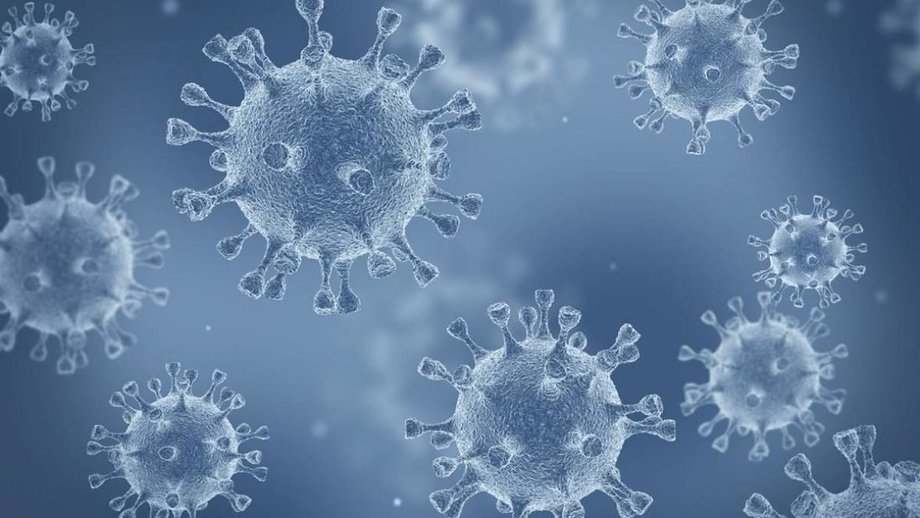Laboratory tests in the diagnosis of Covid-19: where should we look?
We are facing a scenario of uncertainty regarding the testing of individuals for the new coronavirus. Various information and requirements are distinctly propagated and the lack of precise indications greatly aggravates the decision making regarding what type of test should be applied in a given population for the detection of SARS-CoV-2 infection.
There are two different tests for detecting the new coronavirus: serological tests (those that use blood) and molecular tests (those that obtain material from the mucosa of the nose and throat). In summary, serological tests aim to identify the antibodies produced by the patient against the virus that infected him, whereas molecular tests identify the presence of the virus's genetic material directly in the upper airways of infected people.
Serological Tests
Serological tests are intended to identify whether an individual has already had contact with any antigen, however, they are being used as an alternative or as a complement to molecular tests, especially in acute infections. Serological tests have a substantial advantage, which is to identify individuals who were previously infected even after a severe or suggestive condition. Serological tests have also become attractive due to their ease of handling and quick response to results, however, there are many uncertainties regarding the accuracy of these tests.
Currently, there are three types of serological tests: ELISA assays, chemiluminescence assays and lateral flow assays, known as rapid tests. As a rule, ELISA and chemiluminescence tests are performed in laboratories, as they require specific equipment to read the results, whereas rapid tests can be used anywhere, as they do not need equipment to present the final result. In a recently published systematic review, 40 studies that used these methodologies for the diagnosis of the new coronavirus were analyzed. Among all the publications analyzed in this study, the authors report important biases regarding the application of tests, such as time between collection and testing, storage of samples, environmental conditions, among others, which may influence the results of the tests. The sensitivity of serological tests is quite low, with the aggravation of presenting a variation in sensitivity in the same type of test performed in places or using different commercial kits. Rapid tests are the most worrying when it comes to sensitivity. Some assays showed sensitivity of only 21% for detection of immunoglobulin M (IgM), 41% for immunoglobulin G (IgG) and 47% for combined tests (both immunoglobulins), and for IgG, of 55 people known to be positive and tested , 12 were truly positive and 43 were false negatives. For the other tests, there are also variations in the sensitivity of the results, reaching values of 56% sensitivity for ELISA and 57% for chemiluminescence. On average, the sensitivity values in individuals who are truly positive for serological tests are: 84% for ELISA, 98% for chemiluminescence and 66% for rapid tests.
Regarding the specificity of serological tests by ELISA and chemiluminescence, the values seem quite interesting, with an average specificity of 96.6%. The rapid tests were also specific for antibodies against the new coronavirus, however some tests showed a specificity percentage of only 80%. The current evidence does not support the continued use of serological tests for the diagnosis of the new coronavirus in care units, according to the aforementioned meta analysis, a hypothetical example can be presented:
Suppose that a given population of 1000 people with a 10% prevalence of virus circulation is tested for the new coronavirus using rapid tests, we would have the following results:
Among POSITIVES: 66 people will have a positive confirmed test / 34 people will be incorrectly diagnosed as negative
Among NEGATIVES: 869 people will have a negative confirmed test / 31 people will be incorrectly diagnosed as positive
In short, the low sensitivity mainly of rapid tests is very worrying. The poor performance of serological tests raises questions about the application of the results of these tests to the population, especially when they involve medical treatment and / or isolation decisions.
The gold standard of reference for the diagnosis of the new coronavirus remains PCR or, when possible, the culture of viruses in the laboratory (a technique that is difficult to execute due to the needs required for handling the virus). In addition to the test itself, issues such as the patient's origin (company, clinic, hospital, ICU), symptoms (severity of the disease or asymptomatic), days after the first symptoms, for example, should be considered.
These are important indications of weaknesses in the application of serological tests to the population, particularly the commercialized rapid tests. The idea of cost reduction and mass testing has stimulated the rise of serological tests, however, considerations must be taken based on the current evidence that permeates these tests.
Molecular tests
Molecular tests also present great challenges to contemplate the diagnosis of the new coronavirus, particularly involving the balance between several steps necessary for the good performance of the technique. Molecular diagnosis using a technique known as PCR (in English Polymerase Chain Reaction ) consists of collecting small fractions of the virus, generating copies from different regions and detecting the emission of a signal related to the generation of copies of these particles thus reaching a diagnosis of “detected” or “undetected” for the new coronavirus. This technique does not observe the organism's response to the infection, but the presence of the virus in the mucosa of the tested individual.
The PCR needs specific care in order to avoid inconsistent results, and needs to consider some important points, which are:
- Detecting small viral molecules to reduce false negative cases;
- Differentiate the positive sign from other possible viral contaminants (mainly respiratory);
- Can be applied on a large scale and with dynamic delivery of results.
Studies using data from SASR-CoV-1 infection showed that sensitivity was higher in PCR when compared to serological tests. For the infection of the new coronavirus (SARS-CoV-2), three different regions of the virus are amplified in order to further increase the sensitivity and specificity of the test.
There are different methodologies for PCR diagnosis of the new coronavirus, one of which is called one step , which consists of adding the material collected directly in the analysis process, reducing the time and possible contamination due to the lower exposure of the sample. Another methodology is the two steps (two steps) which adds a previous step to the analysis process and pre-amplifies the sample. This technique gives more time, but it can add sensitivity to the test.
The test developed by InsCer contemplates these two methodologies, as it initially makes a screening using the two steps methodology with fluorescent interleavers, and then applies the one step methodology with probes positive samples detected in the first stage. Currently, much has been said about the false negatives of the PCR technique, however, the risks of false negatives in this methodology are not associated with the technique itself, but rather, in a sequence of events that must be prioritized with excellence in the service offer. testing, they are:
- Collection time: a very important issue given the different stages of viral proliferation. To detect viral particles in the naso / oropharyngeal mucosa of patients, the patient must be in a very active phase of the infection (approximately 3 to 6 days after the onset of symptoms). In patients with symptoms, very early or very late collections, can generate false negative results. Atypical infections or changes in the course of symptoms can also hamper the assertiveness of the collection.
- Sample quality: the well-performed collection is the starting point for a quality examination. The collection team must be composed of qualified and continuously trained professionals. The collection involves from the correct accommodation of the patient, handling of all components, correct use of PPE, identification and storage of the samples.
- Sample type: different types of samples carry different amounts of viral particles. The most assertive sample for a CRP test is the alveolar bronchus lavage, however, this type of collection is only possible in patients hospitalized under endotracheal intubation. Induced sputum is also a great source of collection, but often very difficult to obtain. The use of swabs in the nasopharynx is also an optimal option followed by collection in the oropharynx. Collection in both regions can improve test performance.
The test for SARS-CoV-2 performed at InsCer prioritizes all precautions so that none of the steps are discontinued and that the factors that may influence the test result are minimized in detail.
Our team is formed by masters, doctors, researchers and professors linked to the School of Medicine and the Brain Institute of PUCRS.
References:
Bastos, M. L. et al. Diagnostic accuracy of serological tests for covid-19: systematic review and meta-analysis. BMJ 2020 - doi: 10.1136 / bmj.m2516
Caruana, G. et al. Diagnostic strategies for SARS-CoV-2 infection and interpretation of microbiological results. Clinical Microbiology and Infection 2020 - doi.org/10.1016/j.cmi.2020.06.019
Marinowic, D.R. A new Syber Green real time PCR to detect SARS-CoV-2. Scientific Reports 2020 - Prerint Research Square - 10.21203 / rs.3.rs-28188 / v1


